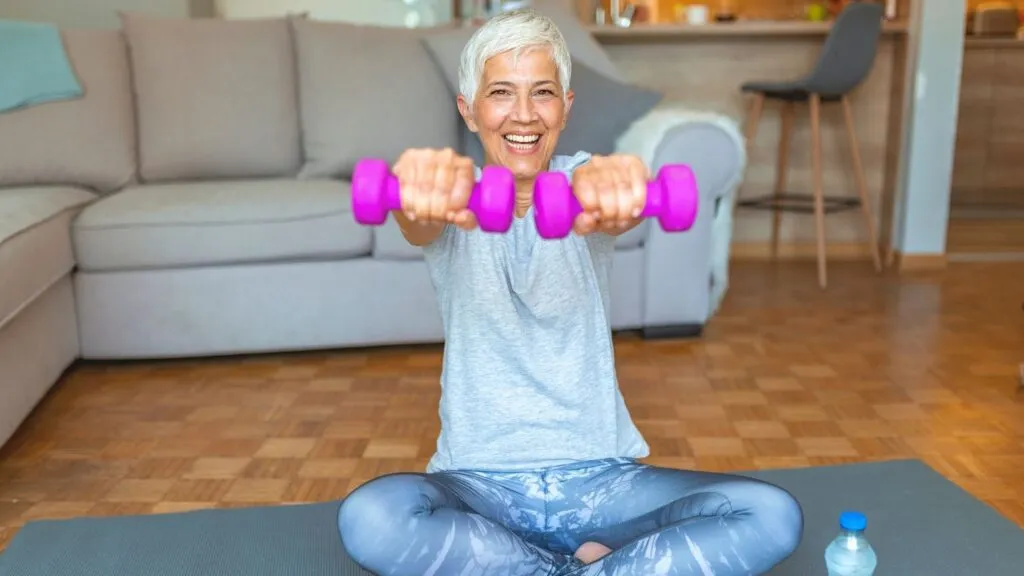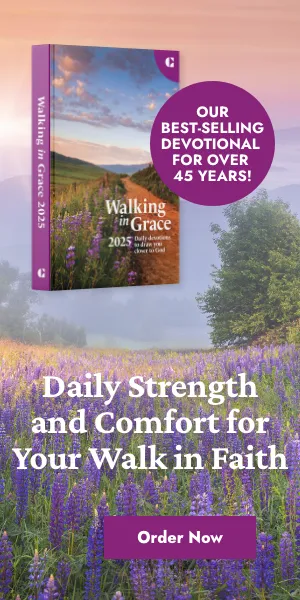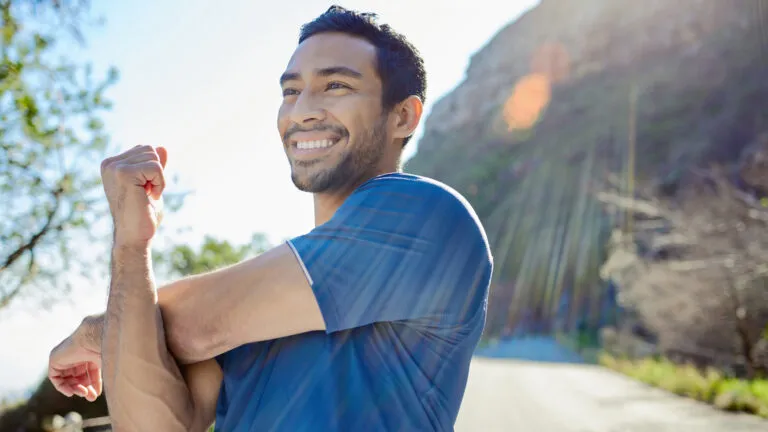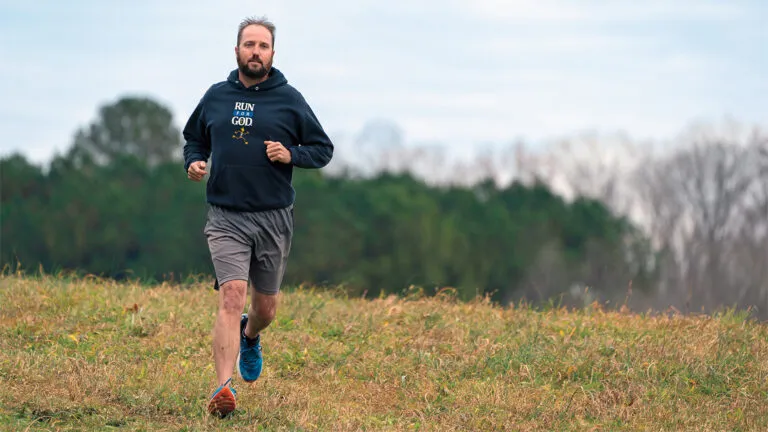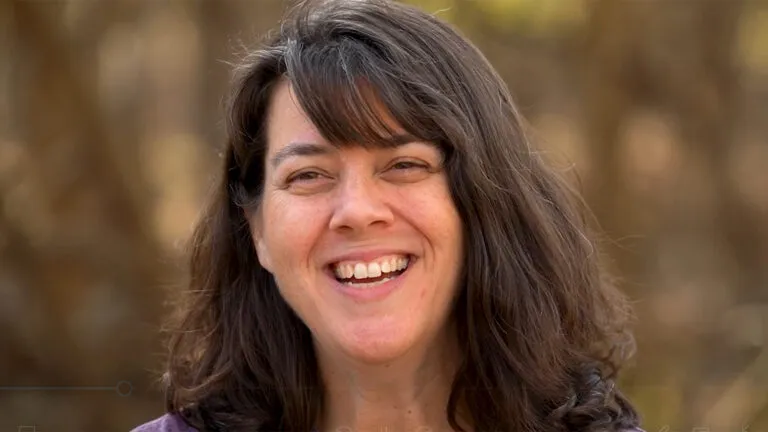Most of us are currently living under stay-in-place directives because of the coronavirus.
Social distancing has become key in keeping our communities safe and preventing the spread of infection, but while following the rules of this quarantine is paramount, it’s also forced us to rethink our exercise routines. Older adults may find it difficult to maintain a healthy workout regiment, especially without the social component that keeps so many of us motivated to break a sweat regularly.
That’s why Guideposts reached out to SilverSneakers, a fitness program offered to seniors, often through their existing medical plans. Julie Logue, the Manager of Training Resources at parent company Tivity Health, answered some of our most pressing questions and shared tips for how older adults can kickstart their at-home workout regimen.
Logue reminds that before beginning any exercise program, it’s important for seniors to get approval from their physician and ask about any specific precautions they’d recommend. Once cleared for exercise, seniors should choose safe exercise options and choose a reputable program.
Does exercise play any role in strengthening your immune system?
“Regular exercise plays a key role in strengthening the immune system,” Logue says. “For seniors in particular, who are often more susceptible to getting sick, the research shows reduced physical activity is a primary cause of reduced immunity.”
In fact, according to some research, we can boost our immune system with each workout which means a quick walk around the neighborhood or an hour gardening could help prevent diseases and infections from wreaking havoc on your body. Of course, the opposite side of this coin is that, if you aren’t getting your blood pumping regularly, you could be at a higher risk for getting sick.
Can regular exercise improve the mood and mental health of seniors?
We’re all struggling with remaining positive and stress-free during this unprecedented crisis. The good news is a bit of movement might help the worries disappear. Logue says the mental health benefits of exercise are undeniable
“One outside study found that depression risk was reduced by half after the first year of SilverSneakers participation,” Logue says of the research conducted with her members, adding that many reported having 30 to 40 percent less mentally unhealthy days. Regular physical activity has even been shown to reduce acute symptoms of depression as well as prevent relapse.
For older adults, working out is about so much more than just aesthetics.
“With regular exercise, seniors can improve daily function, reduce pain and live confident, more independent lives,” Logue affirms.
What are some appropriate precautions to take for seniors worried about exercising on their own?
They should also be wary of quick fixes, unqualified professionals and fads, and tell friends and family members about what they plan to do, Logue said. Enlisting support from others creates accountability and may also create a network of safety.
Finally, since fear or lack of confidence can influence exercise performance, seniors should participate in activities they are comfortable with and enjoy.
What are the best low-impact exercises for seniors with physical limitations?
Logue reminds that before beginning any exercise program, it’s important for seniors to get approval from their physician and ask about any specific precautions they’d recommend. Since fear or lack of confidence can influence exercise performance, seniors should participate in activities they are comfortable with and enjoy.
If you’re one of the many adults living with a chronic condition of injury that keeps you from testing your limits at the gym, you can still enjoy a rigorous workout at home. The key is to be mindful of your body, to listen when you’re muscles start becoming overworked, to press pause when you’re out of breath.
“There are a variety of joint-friendly exercise options,” Logue said. She gave a few examples of low-impact workouts like tai chi, yoga, walking, swimming and cycling. “The key to exercising with physical limitations is to move through a pain-free range of motion. Most types of exercise can be adapted for physical limitations.”
Consider choosing a trusted physical fitness program and always play it safe when considering new exercises to add to your regimen.
“The goal is to move one’s body daily in any way possible.”
How can we practice safe social distancing while exercising?
The social component, experts agree, is what makes group exercise programs so attractive. Obviously, we’re not going to be heading to the gym or a workout class anytime soon, but that doesn’t mean you need to exercise alone.
To overcome the gap, we need to start getting creative with our exercise regimen.
There are plenty of free virtual classes you can take from the comfort of your own home. You can even take a class while on Facetime or Zoom with friends to have that extra support.
“Independent outdoor activities, at-home workouts and participation in online exercise programs are great options,” Logue shares.
Look for open areas outdoors and pathways that allow everyone at least six feet of space. And for those looking to stay home while breaking a sweat, Logue says SilverSneakers might be a good option. The group offers free, live weekly workouts on their Facebook page to both members and non-members. If you’re already enrolled in the program, you can also participate in a variety of video classes with a live instructor.
What are some concerns for seniors who don’t do regular physical activity?
Change can be scary, and for people, especially seniors, who don’t workout regularly, beginning a new exercise routine comes with its own set of anxieties.
“Fear and worry are common barriers to exercise,” Logue explains, citing chronic pain, injury, and intimidation as concerns she hears often. “Seniors should address fears one at a time, start slowly and enlist the help of their physicians, families and qualified senior exercise professionals.”
Logue recommends sticking to the basics at first. Find simple ways to increase your daily movement. If you’re curious about trying a new workout like swimming or bike riding, talk to your doctor first to see if you should take any precautions. Ask for advice from friends and loved ones about the exercises they like and if those might be right for you.
“Start by setting realistic goals, writing them down, and celebrating successes,” Logue suggests.
Above all, listen to your body. If you begin a workout and feel it’s too strenuous or not challenging enough, adjust, don’t give up.
What’s the best type of exercise for older adults?
Speaking of listening to your body, did you know there are different types of workouts that target different parts of it?
“Heart-heathy exercise includes activities that elevate the heart rate, which trains the cardiovascular system for efficiency,” Logue explains. “Muscle strength and endurance activities, such as resistance training, are those that place demand on the muscular and skeletal system and are great for making improvements in activities in daily living as well increasing bone density. In addition, seniors benefit from skill-based training, like exercises to improve balance, to reduce the risk of falls. Finally, range of motion exercises such as light stretching can improve overall flexibility.”
A good mix of all of these are suggested for seniors. “Seniors should seek out programs that provide safe exercise options specifically geared toward their age and fitness level,” Logue advises. “It’s also important for to find a mix of activities that they love so they look forward to being active. They should handle one obstacle at a time and use resources like friends, family, and community support to start and maintain their routines.”
To learn more about SilverSneakers, or to see if you’re eligible, visit silversneakers.com.
SilverSneakers is a registered trademark of Tivity Health, Inc. SilverSneakers GO is a trademark of Tivity Health, Inc. © 2020 Tivity Health, Inc. All rights reserved.
